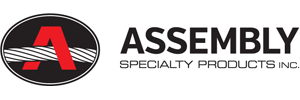Guide to Wire Rope
MENU
- Structural Wire Rope Applications
- Computer-Assisted Design and Detailing
- High Strength Structural Strand
- Custom Finishes
- Pre-stretching
- Striping
- Measuring Wire Rope
- Corrosion Protection
- End Terminations
- Attaching Sockets
- Proof loading
- Order Specifications
- Wire Rope Selection
- Rotation-Resistant Ropes
- Specialized Wire Rope
- Wire Rope Handling and Installation
- Standard Operating Practices
- Wire Rope Inspection
- Technical Info & Specifications
Wire Rope Inspection
The most widely used wire rope replacement, inspection and maintenance standard for mobile-type cranes is ASME B30.5, section 5-2.4. The following is an excerpt from that standard.
All running ropes in service should be visually inspected once each working day. A visual inspection shall consist of observation of all rope which can reasonably be expected to be in use during the day’s operations. These visual observations should be concerned with discovering gross damage, such as listed below, which may be an immediate hazard.
- Distortion of the rope such as kinking, crushing, unstranding, bird-caging, main strand displacement, or core protrusion. Loss of rope diameter in a short rope length or unevenness of outer strands should provide evidence that the rope must be replaced.
- General corrosion
- Broken or cut strands
- Number, distribution, and type of visible broken wires
- Core failure in rotation resistant ropes: when such damage is discovered, the rope shall be either removed from service or given an inspection (further detail per S-2.4.2).
The frequency of detailed and thorough inspections should be determined by a qualified person, who takes into account the following factors:
- Expected rope life as determined by (a) maintenance records, and (b) experience on the particular installation or similar installations
- Severity of environment
- Percentage of capacity lifts
- Frequency rates of operation, and exposure to shock loads
Inspect the entire length of the rope. Some areas of the wire rope such as around the core are more difficult to inspect. To inspect the core, examine the rope as it passes over the sheaves. The strands have a tendency to open up slightly which will afford the inspector a better view of the core. Also regularly inspect for any reduction in diameter and lengthening of rope lay as both conditions indicate core damage.

